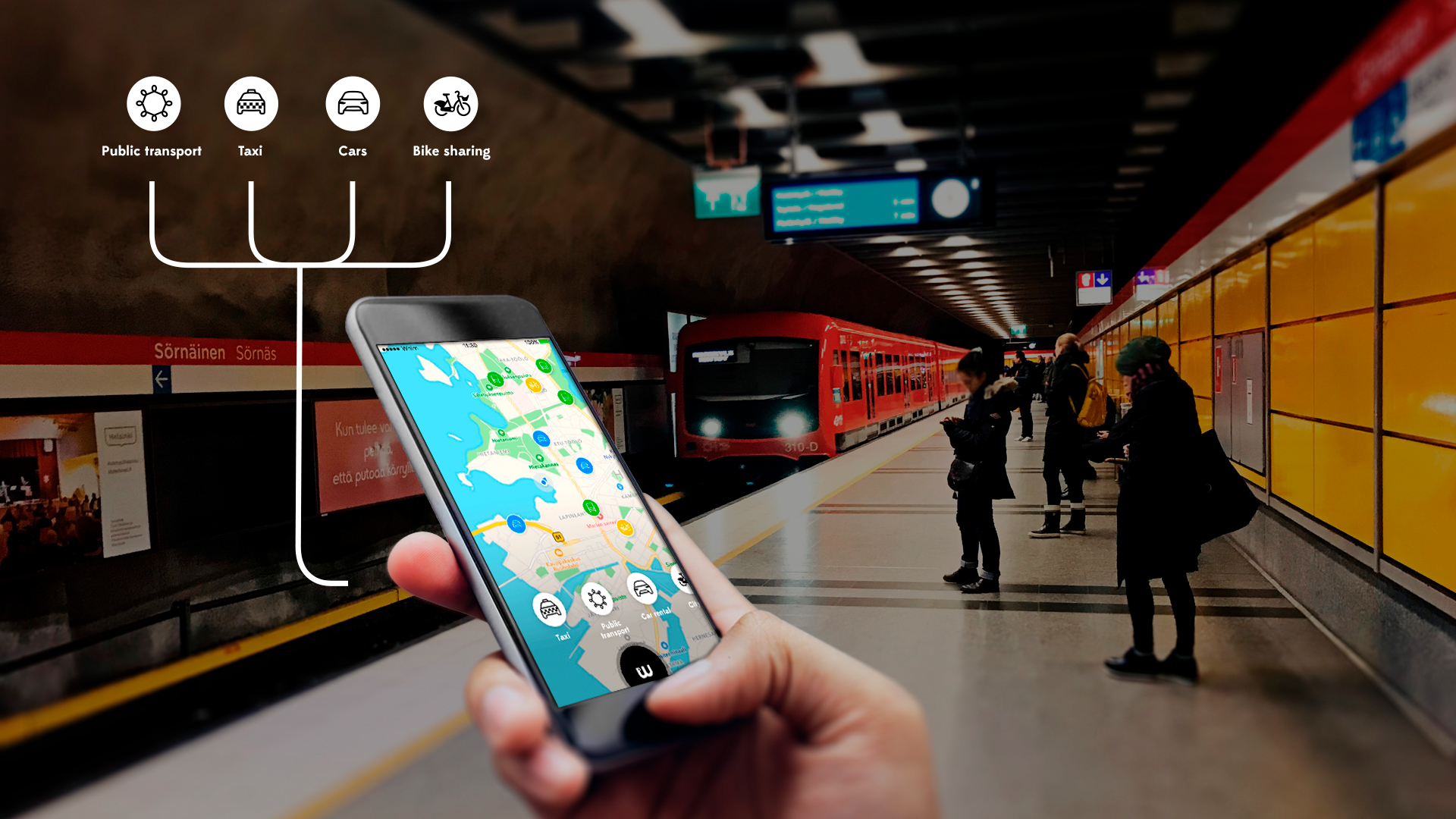
What would it take for you to give up your own car? That is the question posed by Sampo Hietanen, the so-called ‘father’ of Mobility as a Service (MaaS) and CEO of
And he is about to discover if MaaS really will convince the people of Helsinki to do the unthinkable. MaaS Global introduced a fledgling version of its
Whim was named because MaaS must cater for users’ every need – not just regular commuting and other planned journeys, but spontaneous trips made on a…well, a whim. According to Hietanen: “That’s why people love their car; they are in it and going somewhere in a few seconds. MaaS is not about A to B - it is about all the As and all the Bs in the user’s life because if we want to replace their car, we have to take care of all of their moves.”
If companies want to be a real ‘your-mobility’ operator, they can’t start with just integrated ticketing, he goes on. “We can’t even start if it is just integrated ticketing and taxies as we need cars and even bikes - because people don’t want to be managed, they want to be serviced.”
It is not easy to match the convenience of owning a car: “You’ve got to have the planning, the payment, the tickets and all the travel information easily accessible in one place.”
While most commuters do not consult a route planner every day, a mobility app like Whim needs to ‘be with them’ on every journey, not just the unfamiliar ones, adds Hietanen.
Complexity and sophistication
Helsinki’s transport system includes bus, tram, metro, local rail and ferry services as well as bikes and taxis. However, the app was initially launched without a multimodal route planning function as many users were not ready for that level of complexity and sophistication (the company plans to reinstate the function later).
The same is true of Hietanen’s preferred subscription model (whereby users pay a regular monthly fee), so a pay-as-you go option was also introduced at the same time. “The next step will be to cap the maximum somebody will pay and eventually there will be a service promise – but that is a big step as we work through third party transport operators,” he says.
Called Urban, the subscription model costs €49 per month ($57), provides unlimited local public transport within a central Helsinki and caps taxi fares within 5km radius to a maximum of €10 ($11.60) per ride.
Users can also benefit from fixed-fee car rental starting at €49 per day (with unlimited mileage) which is roughly half the standard rate.
MaaS Global has now added an Unlimited option which costs €499 ($580) per month and provides unlimited local public transport and taxi rides (5km radius) within central Helsinki as well as unlimited car rental.
Whim: The story so far…
Since the full launch in November 2017, there have been more than 61,000 downloads of the Whim app and 40,000 people (around 4% of Helsinki’s residents) have registered as users. Most have initially selected the pay-as-you-go option while around 13% subscribe to a package (the vast majority with Whim Urban).
A survey carried out a month after the launch found that 62% of Helsinki residents questioned were aware of Whim and 46% found the concept was interesting - people in the 18-34 age group (including couples with children) were most interested in the service. App downloads were most common among males between 18 and 54 years old (almost half were families with children) and individuals with a gross annual income of €50,000-85,000 ($58,000-$98,600).
Initial results show that the early group of Whim users increased their use of public transport (from 48% to 74% of trips with 91% of all trips having a public transport element) and their use of private cars halved to one trip in five. And while the average Helsinki resident spends €31 ($35.90) per month on public transport, the figure for Whim users is €142 ($165). Part of this increased spend is because the number of taxis Whim users take increased from one to four each month (or 8.4 when business package users are included).
MaaS Global says this increase in spend will lead to additional revenue for Helsinki’s transport providers - although it is still too early to compile reliable figures of the impact.
By way of comparison, the Automobile and Touring Club of Finland calculated the cost of running a car is between €233 and €260 ($270 and $302) per month which rises to more than €500 per month if depreciation is included. When it comes to public transport, the latestNumbeo (the world’s biggest cost of living database) figure indicate a monthly pass for Helsinki costs €54.70 ($63.50).
One-button option
The Whim app is smart enough to learn commuting routes and provide a one-button option for regular travellers to buy their normal travel permits. Bicycles and cars can be rented at any time as an access code is always available, and the diary function can be used for forward planning of one-off journeys.
An initial trial started in 2016 with a restricted number of users which highlighted some problems - one of which delayed the public launch of the service. MaaS Global had signed up 1,500 taxi drivers to provide services for Whim testers - one of whom had two children who needed to attend football practice every Sunday. Unfortunately, the taxi showed up late on one Sunday and failed to arrive at all on the second weekend, prompting the user to pull out of the trial.
Making MaaS happen
Co-operation is the key to implementing Mobility as a Service. “We are nothing without the transit agencies, the taxis and the ride hails, we are nothing without the bikes and access to cars,” explained Sampo Hietanen, CEO of MaaS Global, at ITS International’s recent MaaS Market conference in Atlanta.
In some cities the lack of a single body overseeing or controlling the various transport modes means transport operators are not working together to provide the seamless services or the information on which to build MaaS. In other areas there can be resistance on the part of transport operators to participate in MaaS, so there may not be a viable network of public transport to provide the basis of city-wide mobility.
Transport providers’ technical readiness is also a pre-requisite - in particular application programming interfaces (APIs) conveying the timetabling of transit services, the routing, current location of - and any disruption to - schedules as well as mobile ticketing. A background payment, ticketing and validation system is also necessary. Ticket barriers in rail and metro stations can represent a major technical hurdle to implementing MaaS if they cannot be activated by an electronic ticket displayed on a mobile phone.
However, in a city where all the preconditions are met, Hietanen says his company can implement MaaS within six months without any cost to the authority using a normal purchasing contract. “We buy the ‘tickets’ and take care of the pricing – if we get it wrong, it is our fault.”
Among other things, MaaS provides the potential to incentivise users’ preferred behaviour - and shortly the company will be rewarding users (with a discount on the next month’s subscription) for days when they take only public transport, walk or cycle. “Such travel is not only good for the city but it makes business sense because using public transport, walking and cycling are cheap miles for us, so we make it good for the user too,” says Hietanen.
Work is also underway on an environmentally-based charging system. However, such influences will take some time to turn into action and in the interim the company aims to build users’ trust that it will reliably get them to their destination – regardless of the time and place.
So, will MaaS replace private cars in Helsinki? The jury may still be out on that - but it is a very promising start.








